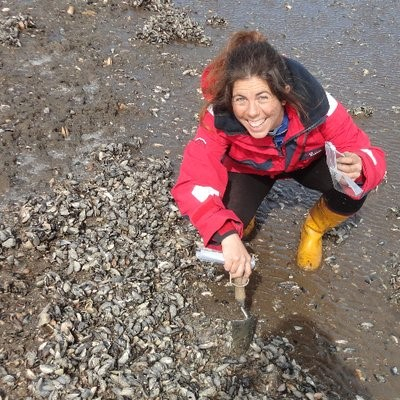We aimed to gather an empirical understanding of the different drivers of self-organization, to further understand its role for stability of ecosystems. We used on-bottom mussel culture plots as our model system, a highly spatial heterogeneous environment in terms of local mussel densities and environment characteristics. To understand mechanisms behind optimal patterning, we coupled field observations with manipulative experiments at both small and large scales.
Our results show that organizing in patterns provides the optimal solutions to resist high dislodgement rates while facilitating food delivery mechanisms. Moreover, local-scale processes from mussels biological activity may further explain the negative feedbacks at high densities, beyond simple competition. We explored how our results can be harnessed to enhance the sustainability of aquaculture in heterogeneous environments
Camilla Bertolini is interested in how benthic species interact with their environment creating feedback loops for whole ecosystem health and maintenance. She is currently a post-doc at the Royal Netherlands Institute for Sea Research (NIOZ), working on disentangling spatial and environmental heterogeneity drivers in mussel beds. Camilla completed her PhD at Queen's University Belfast, UK, where she worked on understanding spatial effects on mussel beds resilience as drivers of their restoration.
